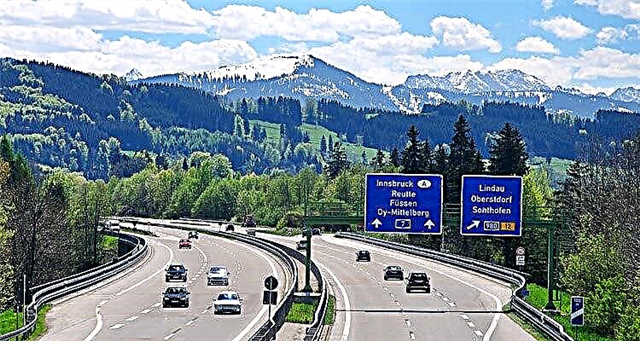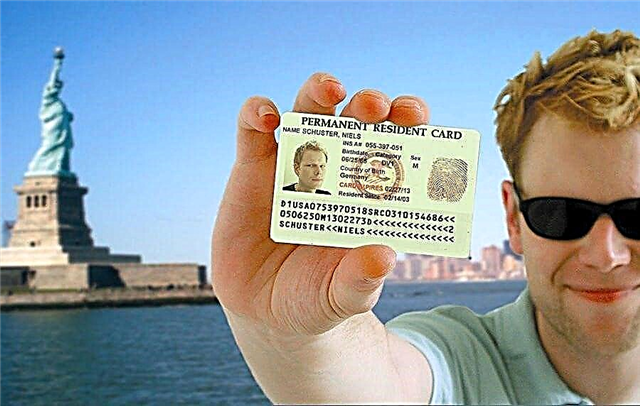In Finland, many people rent housing. There is nothing shameful in the absence of your own apartment: firstly, it allows you to quickly change your place of residence if necessary, and secondly, you don’t need to spend colossal amounts on buying and selling. Renting real estate in Finland is a common transaction, about 25% of the population lives in rented apartments and houses. With this in mind, finding good and affordable housing in large cities is a big problem.

Residential real estate options in Finland
In Finland, there is a slightly different approach to long-term renting of real estate. The interests of the population in need of housing and the interests of landlords are successfully balanced here, many of whom consider the leasing of real estate as a full-fledged business. However, you can rent an apartment not only from a private owner, but also from the municipality.
Many municipalities have their own housing stock, from which apartments are leased to local residents. Municipal housing is considered the cheapest because it is subsidized by the state. Therefore, only:
- citizens of Finland;
- persons with a temporary or permanent residence permit;
- persons who are allowed to stay in the country for a period of at least a year;
- foreign students of Finnish universities with a permitted stay.
The allocation of housing is handled by the housing authority (asuntotoimisto) of the local municipality, where an application must be submitted. This can usually be done online on the website of the municipality where you live.
When processing the application, the applicant's income and property will be taken into account, and the true need for housing will be assessed.
Please note that there may be a queue for municipal apartments. For example, in the metropolitan area (Helsinki, Kouvola, Espoo) you can wait for an apartment for several years, while in small provincial towns (Mikkeli, Kotka, Savolinna) there are probably free square meters that are already available for housing.
The second option is rental housing from a private owner. Finding it will take much less time. The rent will be significantly higher, but the number of objects and the choice will be much wider. So to speak, for every taste and color.
It can be ordinary small apartments, furnished apartments, and even a small house within the city. Do not be surprised if you are offered to inspect the selected apartment, but two dozen other potential tenants will come along with you to the meeting - this is in the order of things. Therefore, the decision to rent must be made quickly.
Wealthy foreigners are also interested in renting cottages in Finland outside the city. One of the most popular options is a cottage timeshare village on the shores of Lake Saimaa. It offers guests a well-developed infrastructure, a yacht dock and even a spa center.
There is also dedicated student rental housing. These are not only university dormitories, but also ordinary small apartments owned by student funds, student unions and corporations. Rental fees are usually lower than public housing fees. More information about them can be obtained from the educational institution itself.
In addition to these housing options, in Finland there are such categories of residential real estate as:
- Apartment with the right of residence (asumisoikeusmaksu). The option of home ownership, in which the guest pays about 15% of the cost of the apartment to the owner's account, and pays the rent on a monthly basis (käyttövastike). At the same time, he receives the right to permanently reside in it - the owner has no right to evict such a tenant, which fundamentally distinguishes such a scheme from a lease.
- The apartment is in shared ownership (osaomistusasunto). When entering an apartment, the co-owner pays 20-30% of its cost, after which he pays monthly rent for 10-12 years. During this time, he undertakes to redeem the remaining share in the ownership, after which he becomes the sole owner.
How to find accommodation in Finland
The easiest way to find housing is with a private realtor or real estate agency. It is enough to draw up a surety agreement with him (toimeksiantosopimus) and he himself will look for a suitable apartment. All that is left for the tenant is to walk and choose.
Please note that only licensed realtors and agencies (LKV) can provide such services. For his services, the real estate agent will take a commission (välityspalkkio), the amount of which is agreed in advance in the contract. Usually the commission is equal to the cost of a monthly rental.
Here are some well-known agencies:
- Huoneistokeskusi;
- Kiinteistomaailma.fi;
- Lomarengas.
To save money, look for housing without intermediaries. But remember that few Finns trust foreigners and rent out housing without a real estate agent.
Information about available housing can be found on the Internet, in local periodicals, or you can submit your own advertisement for looking for an apartment.
There are many Internet resources on the network with ads from private landlords, for example:
- vuokraovi.com;
- etuovi.com;
- op-koti.fi;
- oikotie.fi;
- ovv.com;
- kkv.fi;
- asunnonvuokraus.com.
In addition to online sources, use printed publications, for example:
- Helsingin Sanomat, Keltainen pörssi;
- Ilta-Sanomat;
- Aamulehti;
- Iltalehti;
- Turun Sanomat.
Rental procedure
After the necessary object is found, the tenant and the landlord need to:
- Agree on the terms of the lease, in particular, the rental period, the rent and the timing of its payment, the rules for the use of housing, the procedure for checking the condition of the premises by the landlord, the possibility and costs of repairs, and so on.
- Agree on a security deposit (vuokravakuus). It may be required to meet rental claims or other tenant's contractual obligations. The amount of such a deposit should not exceed the amount of the rent for three months.
- If necessary, agree on the tenant's purchase of insurance for the apartment property, as well as the possibility of subletting the apartment and discuss other important points.
- Sign a written lease agreement describing all the terms and conditions agreed by the parties.
- Conduct a joint inspection of the premises and record in writing the detected defects, shortcomings and other important facts about the condition of the housing and the household items present in it in the inspection protocol (it is stored throughout the entire lease term).
- Transfer the apartment and the required set of keys to the tenant. From the moment the apartment is transferred to the tenant's use, the landlord loses the right to visit the premises without the need and permission of the tenant. Inspection of the condition of the apartment is carried out by agreement. From the moment of transfer of the apartment, the tenant is obliged to take good care of the housing, compensating for any damage that was caused, except for normal wear and tear.
Depending on the situation and existing risks, the landlord has the right to require the following documents from the potential tenant to complete the lease agreement:
- passport or other identity card;
- residence permit for foreigners;
- a certificate of current salary or an account statement confirming financial well-being;
- a copy of the tax return showing the property you own;
- certificate of available loans and existing credit history.
Rental agreement in Finland
A lease agreement can be either oral or written, however, to fix the conditions, it is recommended to conclude only written lease agreements. Usually it is drawn up in Finnish / Swedish / English, but at the request of the party it can be additionally drawn up in Russian.
You can not use special forms and not contact a notary by drawing up a document in free form.But at the same time, it must necessarily contain:
- full personal data of the parties to the contract, indicating the date and place of birth, passport and other identifying data, including phone and email;
- subject of lease - address, apartment number, number of rooms, area and other individualizing signs, as well as information about other premises used, for example, an attic or a parking lot;
- the amount of rent, the procedure and timing of its payment, including the indication of the bank account to which the money is transferred, the reasons for the increase in rent, as well as other expenses borne by the tenant;
- condition on the guarantee deposit, its amount and the procedure for its payment;
- lease term, if the contract is urgent (if the term is not specified, the contract is concluded for an unlimited period);
- the rights and obligations of the tenant for the use, maintenance and care of the property in use, the right to re-rent, admission to the premises of third parties, and so on;
- grounds for early termination of the contract, the procedure for sending a notice of eviction in connection with termination;
- any other conditions that the parties have previously agreed on and wish to fix.
If you do not wish to draw up a contract yourself, see the standard form here.
The cost of renting a home in Finland
For obvious reasons, the cost of renting housing in Finland depends on the region you plan to move to, its size, condition, distance from the center of the settlement and other features.

The most expensive housing is traditionally in the capital region - in the south of the country. The average price of 1 m2 in a municipal apartment in Helsinki and the surrounding area in 2021 is around 13-14 euros. Private housing is much more expensive - from 16 to 20 euros per 1 m2, depending on the city. In Helsinki, average prices are much higher: 26 euros / m2 in studios and 22 euros / m2 in apartments. Housing can be found relatively inexpensively in districts outside the city center - about 15 euros / m2.
So, in the vicinity of Helsinki, you can find an apartment with an area of 30-50 m2 for 600-1.2 thousand euros. Apartments in the center and by the sea are much more expensive - from 1.5 to 2 thousand euros per month.
You can count on cheaper housing in the eastern part of the country. For example, in Mikkeli you can find a decent 2-room apartment for 600-800 euros. A similar pricing policy and in the central region: for example, in Jyväskylä it is difficult to find a "kopeck piece" more expensive than 800 euros per month.
Prices in western Finland are also significantly lower than in the capital. For example, in Vaasa, cozy accommodation can be found at a price of 550 euros.
But please note that this is only a rent. In addition to it, other expenses may be imposed on the tenant by the contract, in particular:
- payment for electricity - monthly about 30-40 euros (the lessee must independently conclude an agreement with the power supply organization);
- payment for water supply - depending on the availability of a meter, it can cost 10-20 euros per month per person;
- buying an insurance policy for an apartment - about 100 euros per year;
- heating - it is additionally paid only if it is a residential private house, if there is a centralized heating system, its cost is usually included in the rent;
- payment for laundry, parking, saunas and so on.
Where can I get housing advice
If, when looking for or registering a rental housing, one of the parties to the contract requires housing advice, it can be easily obtained from the local Consumer Union (Suomen Kuluttajaliitto). Two traditional channels of communication with the Union are widespread:
- by phone 09-454 22 130 from Tuesday to Friday from 10 to 12 and from 17 to 19 hours (for all regions of the country at the rates of local companies);
- via the Internet: by e-mail [email protected] or via the forms provided on the kuluttajaliitto.fi website.
The consultation can be obtained free of charge. In addition to the Consumer Union, certificates and other necessary assistance in finding and renting housing can be obtained from the Home Economics Association (Marttaliitto) and the Refugee Council (Suomen Pakolaisapu).
Commercial lease objects in Finland
Along with residential real estate, commercial real estate is also very popular. These are traditionally office buildings, warehouses, shops and catering establishments, and other real estate used in business.
Prices for it are formed based on the type of real estate, its area, nature of use and, of course, regional location. Traditionally, prices are higher in the south of the country and the business center.
For example, a small retail space of 30 m2 in a residential area of the capital will cost an average of 1,000 euros / month. A store of 60 m2 will be leased on average for 1.5-1.7 thousand. A small office of 50-70 m2 will cost 1.2 thousand euros, while a similar office in Slovolinna or Mikkeli will cost only 450 euros. and in Turku - about 600 euros.
A small shop of 30 m2 with a good location in Turku will also cost about 1,000 euros per month.
When it comes to production and storage facilities, prices of a different order appear. For example, a large premise of about 1,000 m2 with its own offices and a huge garage in the suburb of Turku will cost 10,000. A small industrial building with an area of 300 m2 80 km from Helsinki will cost 1,700 euros per month.
Commercial leases are issued in the same manner as housing leases:
- A search for a suitable room is in progress.
- An application is being submitted to rent it.
- Negotiations are underway with the owner about the price, lease terms and other conditions.
- A joint inspection is carried out, an inspection report is drawn up.
- The parties sign a lease agreement, the keys to the premises are handed over to the tenant.
You can find a suitable option on the specialized Internet sites mentioned above, as well as on the sites of specialized companies that provide consulting services for the management of commercial real estate.
Here are some examples:
- tuloskiinteistot.fi;
- premises.fi;
- toimitilat.oikotie.fi.
Renting out your own real estate
In addition to commercial real estate directly, business is also being built on residential real estate, which is rented. The profitability of this option is 3-5% per year of the cost of housing, although its size also depends on the type of real estate.
If you are permanently outside Finland, you can entrust the management to a real estate agency or a private realtor. If it is a short-term rental resort property, it is managed by a dedicated company that also provides maintenance and operation.
In addition, large private developers selling real estate to citizens can offer the option of guaranteed rental of the housing being sold for an indefinite period.
You can also look for tenants yourself: on the sites for renting residential real estate there is a special paid option for homeowners, for example, "search for a tenant in 8 weeks." If the resource does not meet the deadline, the commission is returned to the landlord.
In any case, he must:
- make sure of the potential tenant's solvency, including by examining his credit history;
- request recommendations from its previous landlords;
- negotiate a deposit and insurance with the tenant;
- inform the tenant about possible repairs being carried out;
- explain whether it is possible to have pets in the apartment, smoke and so on.
Buying your own property in Finland
Real estate in the traditional sense is considered only houses and land, for example, for construction. Apartments are formally movable property.
All apartment buildings from developers are owned by housing joint stock companies that own the land under the house. The number of shares is assigned to each apartment, therefore the owners of the apartments are the shareholders of the ZhAO, and not the owners of the real estate.
In general, the process of acquiring housing after selecting a suitable option takes place in several stages:
- Reservation and verification of the object: checking the legal cleanliness, condition of the apartment, searching for hidden defects, opening a current account, drawing up a preliminary contract and making a deposit (3-5% of the cost, but not less than 2 thousand euros).
- Signing a sales contract at a real estate agency or a bank, a prerequisite is the presence of a notary.
- Payment of the cost of real estate + services of a realtor and a notary + tax on the transfer of ownership of 2-4%.
- Registration of the transfer of rights in court (except for apartments). The rights to the apartment are registered by the building manager.
Conclusion
In Finland, there are many options for renting housing from private owners, as well as from municipal and other subsidized funds. It is customary to search for rental housing through real estate agencies or independently on specialized sites and in print media.
Renting an apartment is always formalized by a lease agreement, which contains the amount of the rent, the validity period (otherwise it is considered indefinite), the amount of the mandatory deposit, the need to purchase insurance and other rental conditions.
In addition to the rent, the tenant may also be charged with utility bills such as electricity, water and heating.











